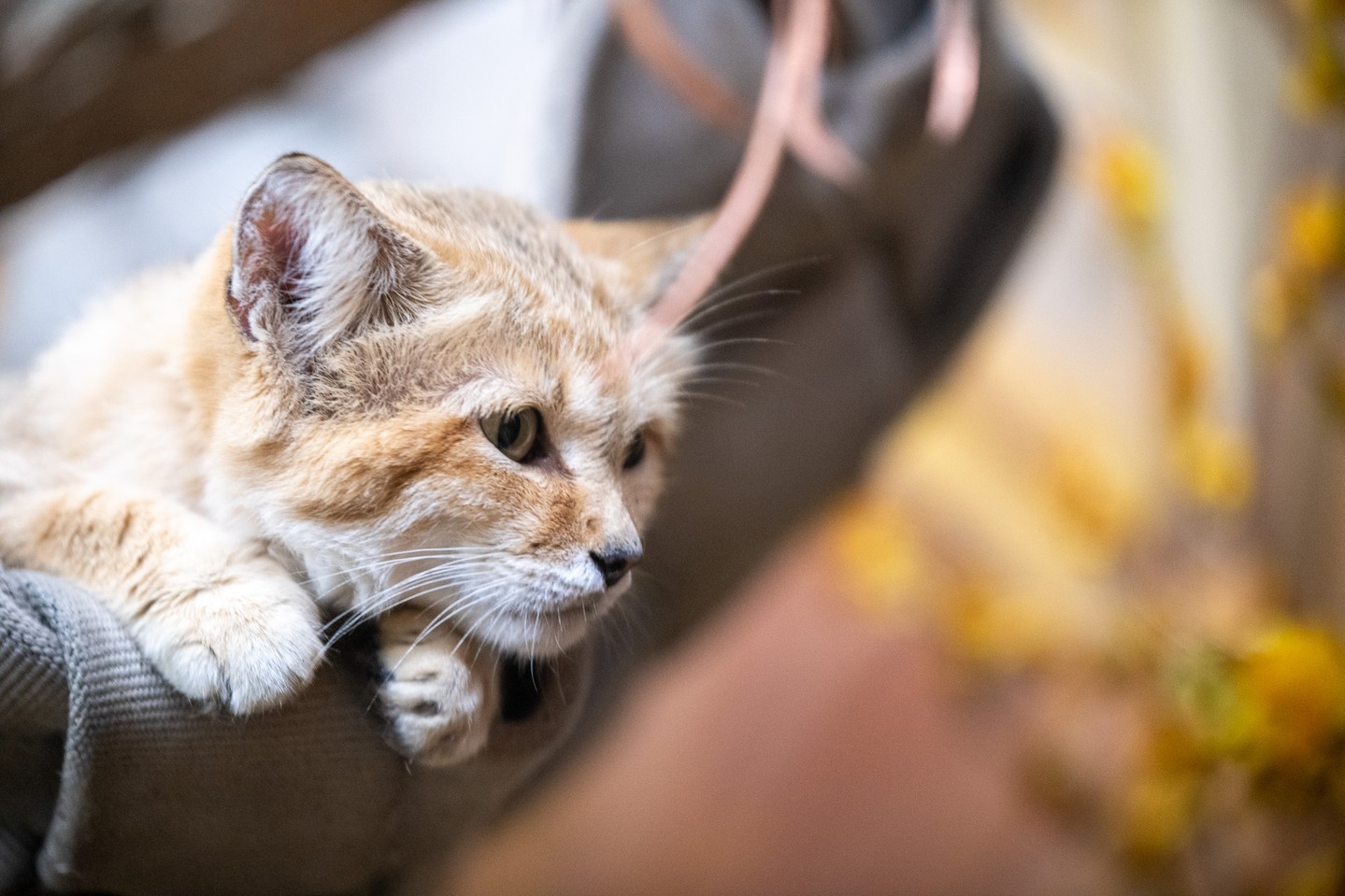- Introduction to the Lake Superior Zoo’s new residents: sand cats Tony and Pumpkin
- Natural habitat and environmental adaptations of sand cats
- Diet and hunting behaviors of sand cats
- Importance of wildlife conservation and how visitors can support the Lake Superior Zoo
- Opportunities to adopt Tony and Pumpkin to support the zoo’s initiatives
Lake Superior Zoo is excited to introduce Tony and Pumpkin, our new sand cats, to our visitors this weekend. Learn more about these fascinating animals and how they adapt to some of the harshest environments on Earth. Sand cats are masters of survival, an asset to conservation education, and an engaging addition to our zoo family.
Sand Cats’ Habitat and Adaptations
Sand cats are found in three primary regions: Africa’s Sahara desert, the Arabian Peninsula, and parts of Central Asia. These areas present extreme environmental challenges, with daytime temperatures soaring to 124 degrees Fahrenheit and plummeting to 31 degrees Fahrenheit at night. Such drastic changes demand unique survival strategies.
To deal with the temperatures, sand cats dig burrows in the sand. These burrows provide refuge from daytime heat and nighttime cold. The sandy environment also helps them remain hidden from predators and unseen by prey. Unlike domestic cats, sand cats have fur-covered feet, protecting their pads from hot sand and enabling them to walk almost silently, a crucial adaptation for hunting and evasion.
Diet and Hunting Techniques
Sand cats’ diets primarily consist of small rodents. They also consume hares, birds, spiders, insects, and reptiles. Their hunting strategy involves staying close to the ground and using their acute hearing to detect infiltrating prey beneath the surface. This specialized sense allows them to pinpoint the location of burrowing animals. Once they hear activity below, sand cats dig rapidly to capture their meal.
Remarkably, sand cats can survive for weeks without drinking water, deriving most of their hydration needs from their prey. This adaptation is vital for their sustenance in arid climates with scarce water sources.
Supporting Wildlife Conservation and Adoption
At Lake Superior Zoo, we are committed to wildlife conservation and education. Sand cats like Tony and Pumpkin play an important role in these efforts by helping our visitors understand the significance of preserving species and environments. By learning about the sand cats’ survival strategies and ecological roles, guests can better appreciate the need for conservation.
There are many ways to support these efforts, including animal adoption programs. By adopting Tony and Pumpkin, you contribute directly to their care and the ongoing initiatives and improvements at the zoo. Your support helps fund new additions, renovations, and educational programming.
Photos and Documentation
Our staff photographer, Heidi Beal, has captured stunning images of Tony and Pumpkin, helping illustrate the beauty and unique adaptations of sand cats. These photos are visual treats and valuable educational tools for our visitors and supporters.
Conclusion
Meeting our new sand cat residents, Tony and Pumpkin, provides an enriching experience that underscores the importance of wildlife conservation. By understanding their natural habitat, diet, and hunting behaviors, visitors can gain a deeper appreciation for these remarkable creatures. Supporting initiatives like adoption ensures the sustained care and conservation of species at the Lake Superior Zoo. We invite you to visit, learn, and contribute to the meaningful work of wildlife preservation.
*****
Source Description
Are you coming to meet our new animal pals, sand cats Tony and Pumpkin, this weekend? Here are a few different expressions you might see when you do! The Lake Superior Zoo is open daily from 10am-5pm.
Let’s talk about Sand Cats!
Sand cats are native to three distinct regions of the world; Africa’s Sahara desert, the Arabian peninsula and parts of central Asia. The areas where they live can range from 124 degrees Fahrenheit during the day and drop to temperatures as low as 31 degrees Fahrenheit at night. That is an extreme change! These cats burrow and dig in sand to create burrows they retreat into when temperatures reach extremes.
Sand cats eat primarily small rodents but will occasionally eat hares, birds, spiders, insects and reptiles. They get most of the water they require for survival from their prey and can survive weeks without drinking water. They hunt by skulking close to the ground and using their enhanced sense of hearing to detect prey. When they hear the sounds of a potential meal digging under the ground they will begin to dig rapidly to capture their prey.
You can support this species and other new additions, renovations and programming through adoption as well! Tony and Pumpkin are available for adoption on our website here; https://lszoo.org/support/adopt-an-animal/
Photos by our Staff Photographer, Heidi Beal


